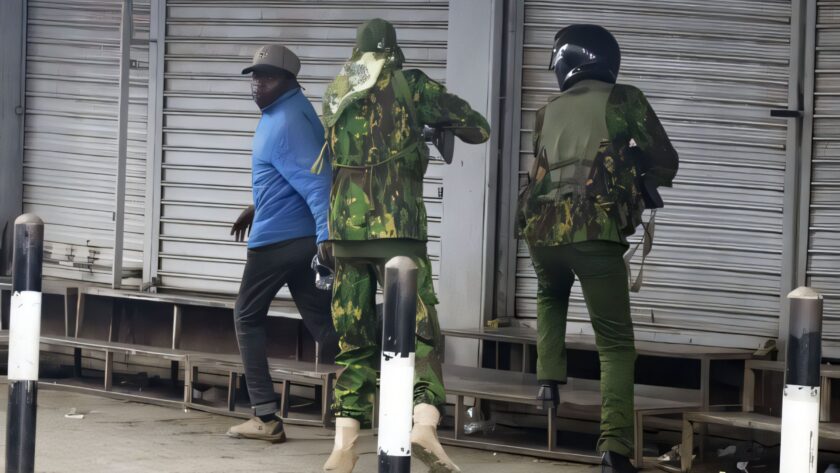Kenya in Crisis: Police Shoot Unarmed Man During Protests Over Blogger’s Death
Kenya is once again confronting the brutal reality of police violence after a shocking incident on Tuesday in Nairobi, where an unarmed man was shot at close range by a masked police officer during protests over the recent death of blogger Albert Ojwang in police custody.
An Associated Press journalist captured the horrifying moment as the officer, wearing a face mask to conceal his identity, fired what appeared to be a shotgun into the head of a man walking away. The victim, reportedly a street vendor selling face masks, had been caught in an altercation between police officers while standing on a sidewalk. Eyewitnesses say he was not part of the protest but was simply in the wrong place at the wrong time.
The man was rushed to Kenya’s largest referral hospital along with at least ten others injured during the demonstration. Hospital authorities confirmed several cases of gunshot wounds among the injured.
The police issued a statement expressing concern over the incident and confirmed that the officer involved had been arrested. Still, the damage—both physical and emotional—has already intensified public anger and widened the credibility gap between law enforcement and Kenyan citizens.
Tuesday’s protests were part of a growing movement calling for justice for Albert Ojwang, a young blogger arrested on June 6 for allegedly defaming Deputy Inspector General Eliud Lagat on social media. Ojwang was transferred nearly 400 kilometers to Nairobi, only to be found dead two days later in police custody.
Police initially claimed he died after “hitting his head on a cell wall,” but a post-mortem report told a very different story: signs of neck compression, head trauma, and multiple injuries suggested he had been assaulted.
The commanding officer of Central Police Station, Samson Talam, and officer James Mukhwana have since been arrested. Deputy Inspector General Lagat, who filed the original defamation complaint, announced Monday he was stepping aside during the investigation.
Protests in Nairobi escalated quickly, as hundreds clashed with police demanding not only accountability for Ojwang’s death but systemic reforms in the police force. The unrest turned chaotic when a group of motorcycle riders allegedly attacked both protesters and passersby, snatching phones and bags. In retaliation, demonstrators set one of the motorcycles ablaze.
As the capital descended into disorder, the government once again found itself on the defensive. President William Ruto, who campaigned on promises to end police brutality and extrajudicial killings, now faces renewed scrutiny. These protests come nearly a year after a string of abductions and killings of activists during anti-finance bill demonstrations, which also led to mass outcry and calls for Ruto’s removal.

Kenya’s history with police brutality runs deep. Reports from human rights organizations have documented a troubling pattern of abuse, particularly targeting activists, journalists, and low-income communities. Despite public declarations and repeated promises, reforms remain largely symbolic, and accountability is rare.
“This is not an isolated case,” said a spokesperson for the Kenya Human Rights Commission. “It reflects the larger issue of unchecked power and a culture of impunity within the police service.”
The shooting of an unarmed man in broad daylight, witnessed by journalists and captured on camera, has reignited urgent calls for action. For many Kenyans, the question now is not whether change is needed, but whether the government has the political will to deliver it.
As the nation grapples with grief, rage, and growing disillusionment, one thing is clear: silence is no longer an option. The streets of Nairobi are echoing a demand that’s impossible to ignore

